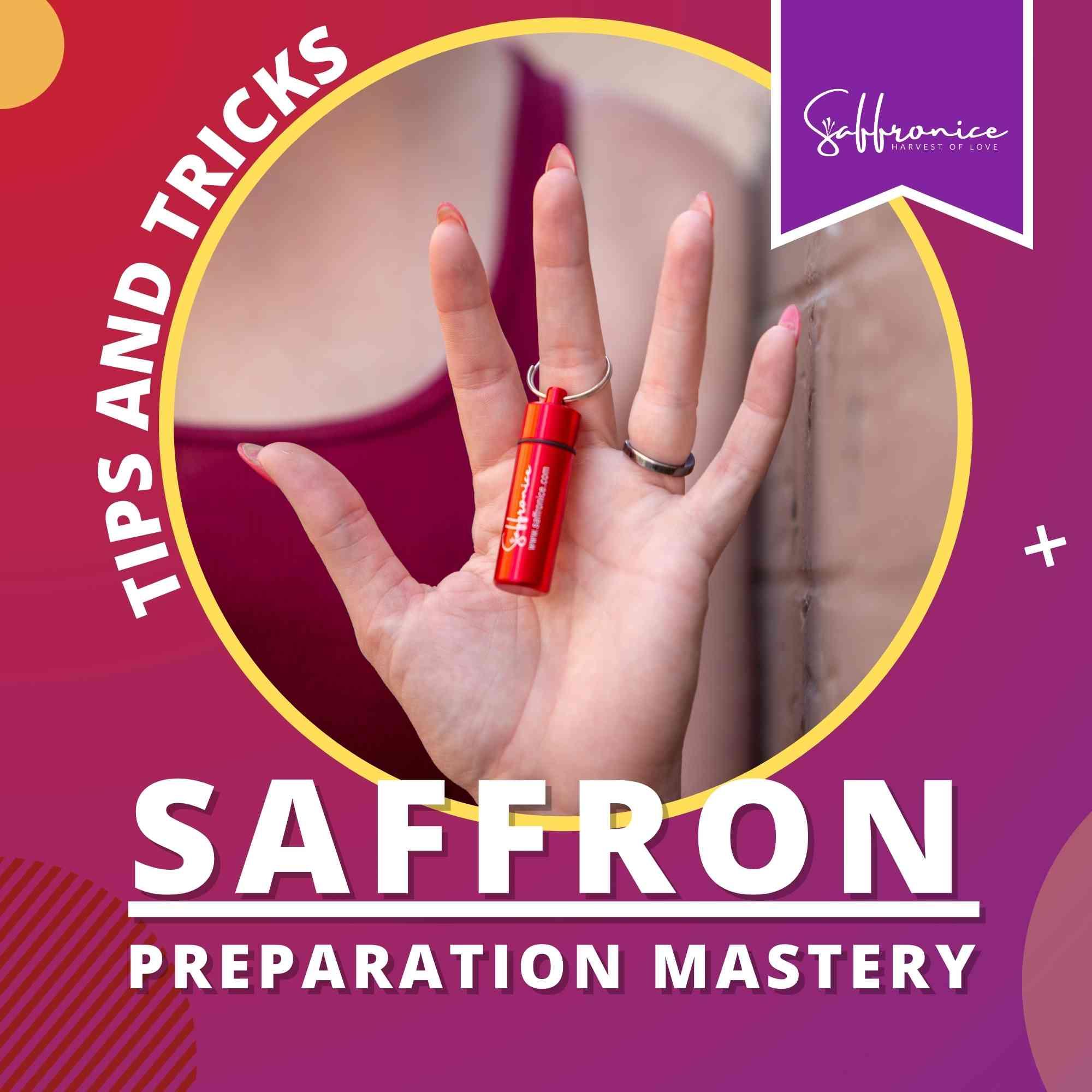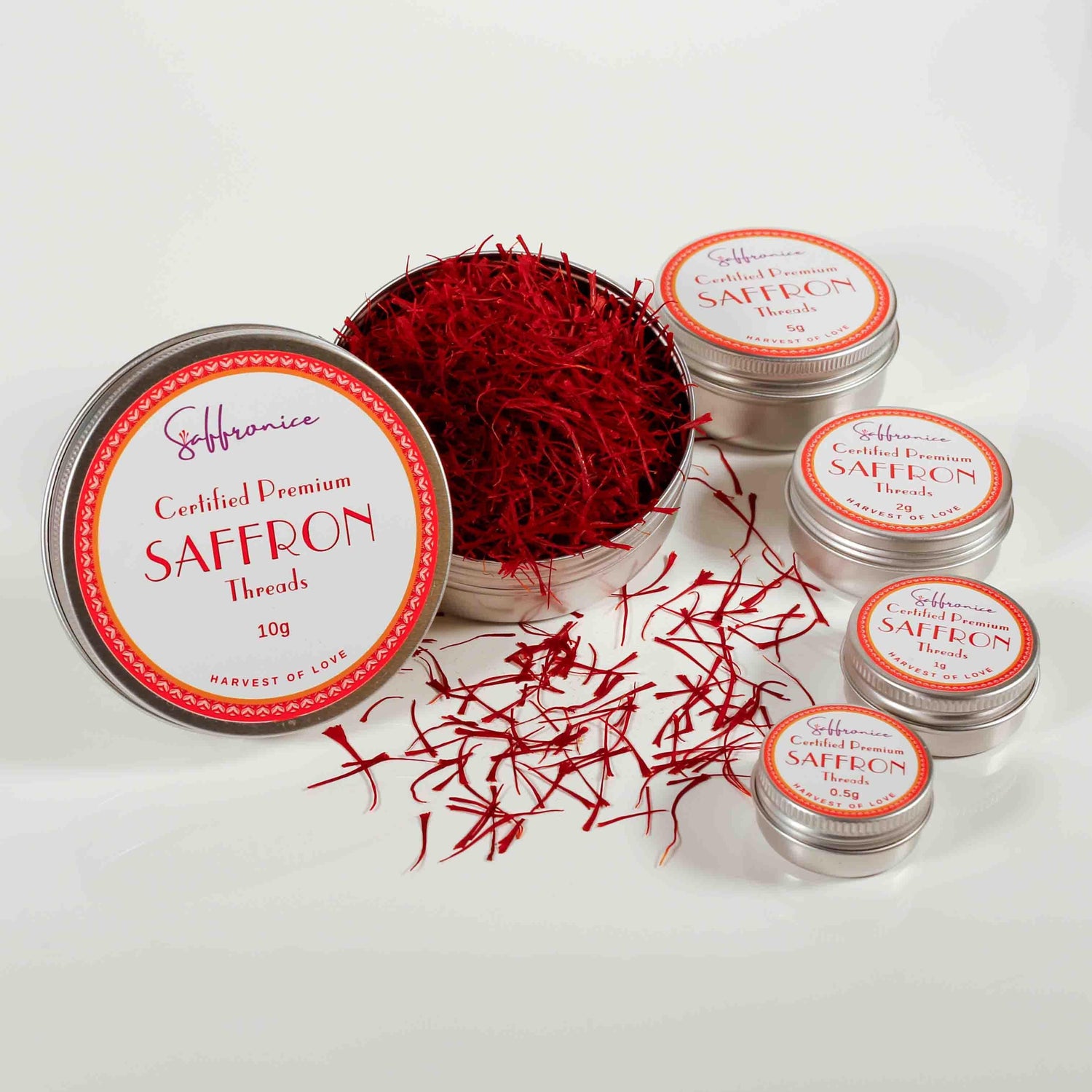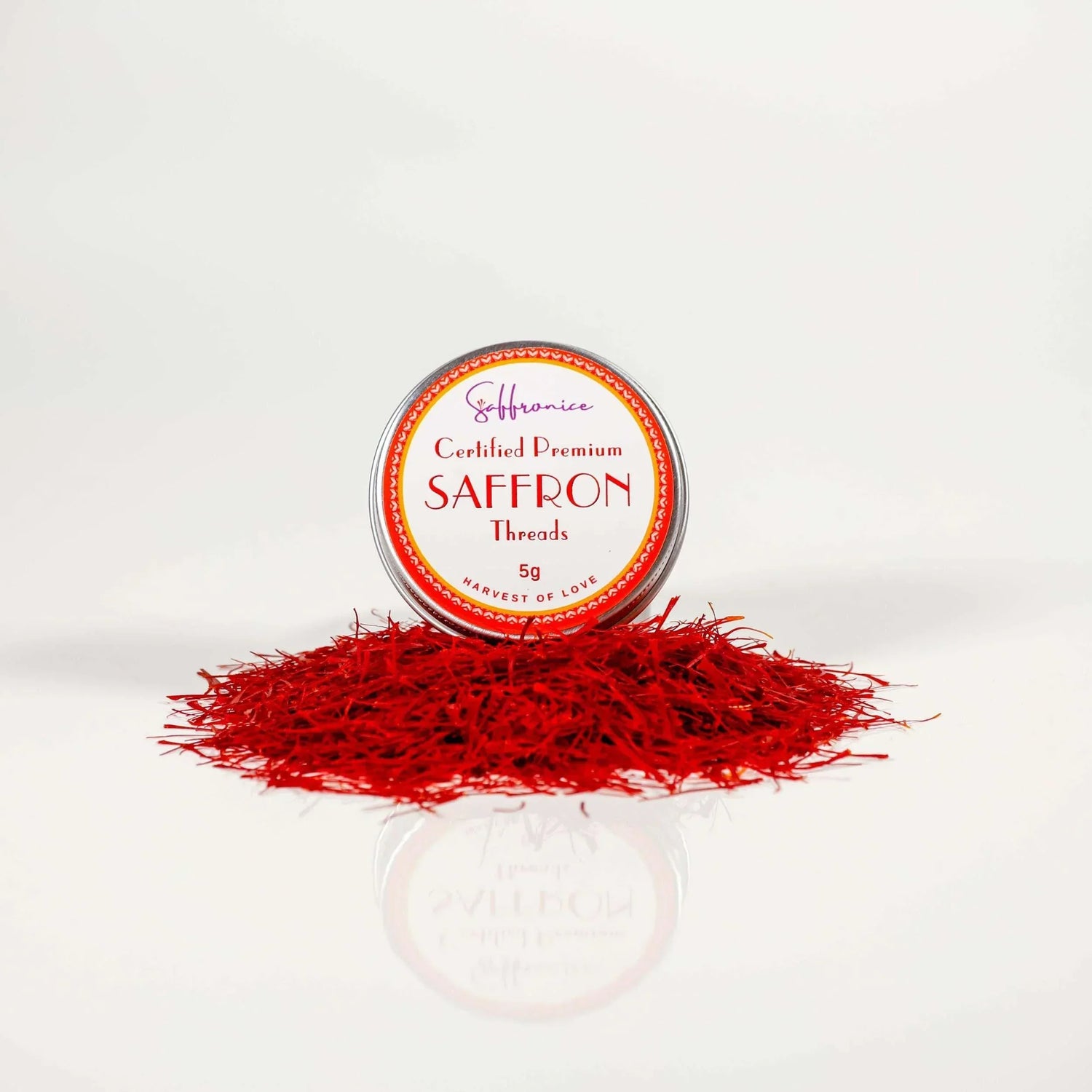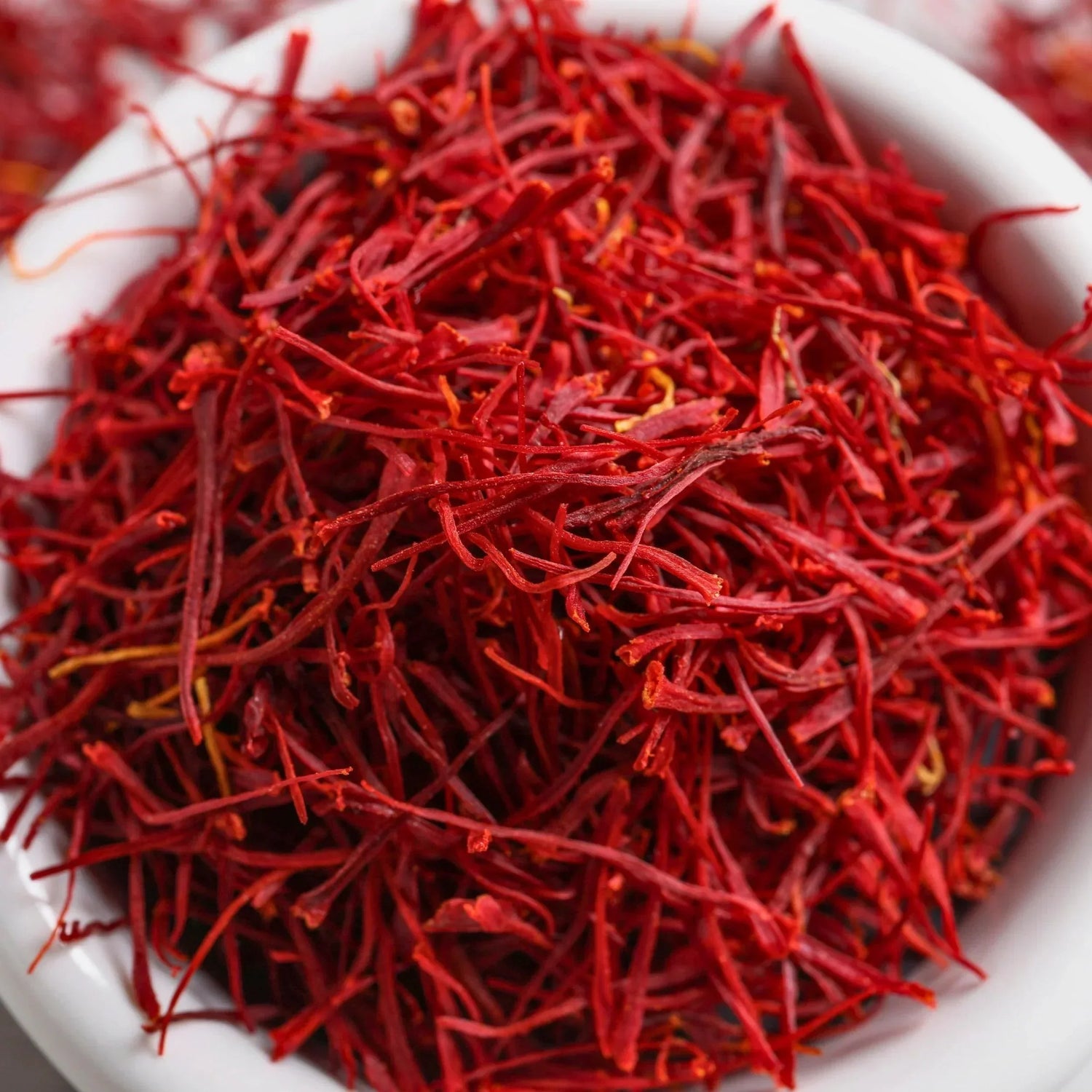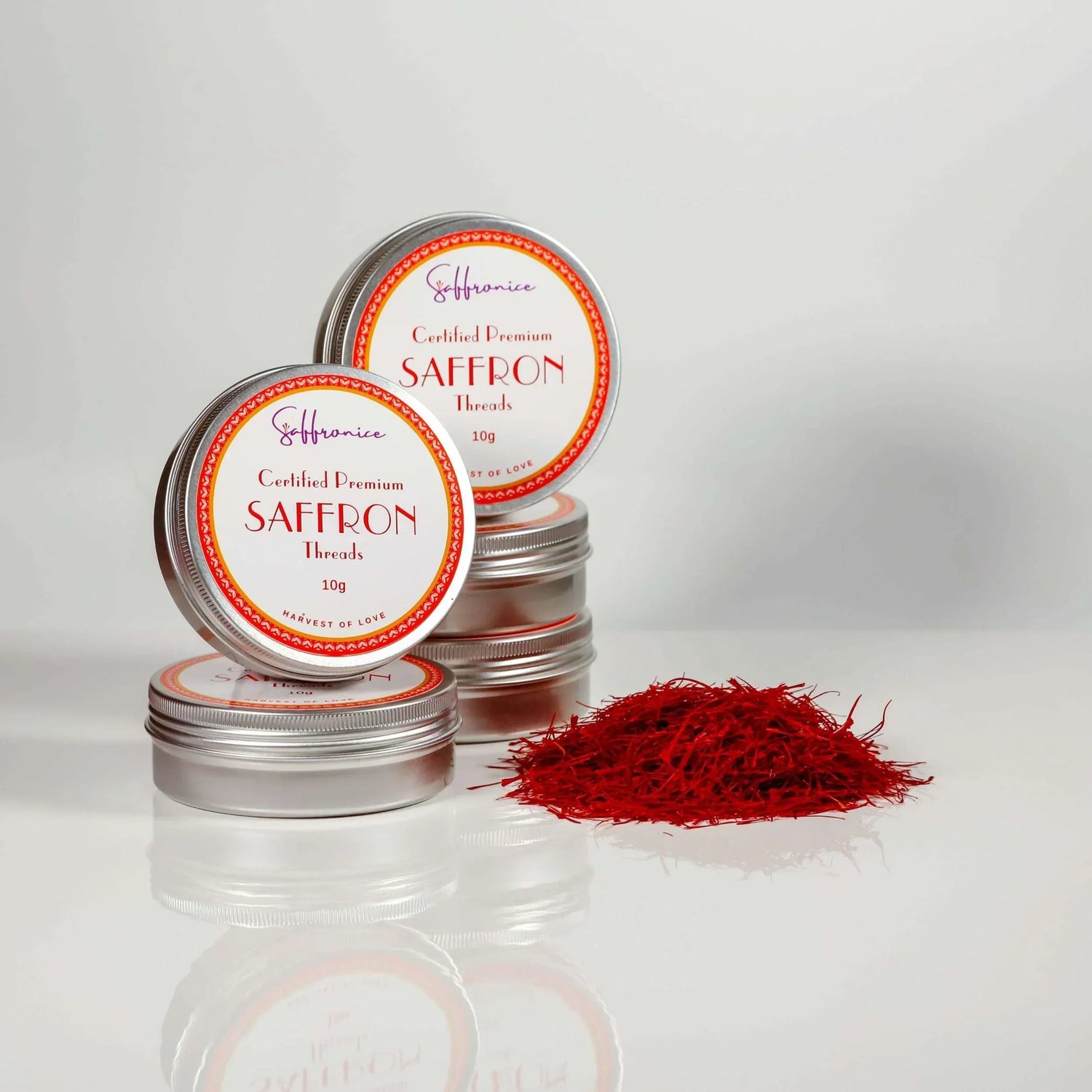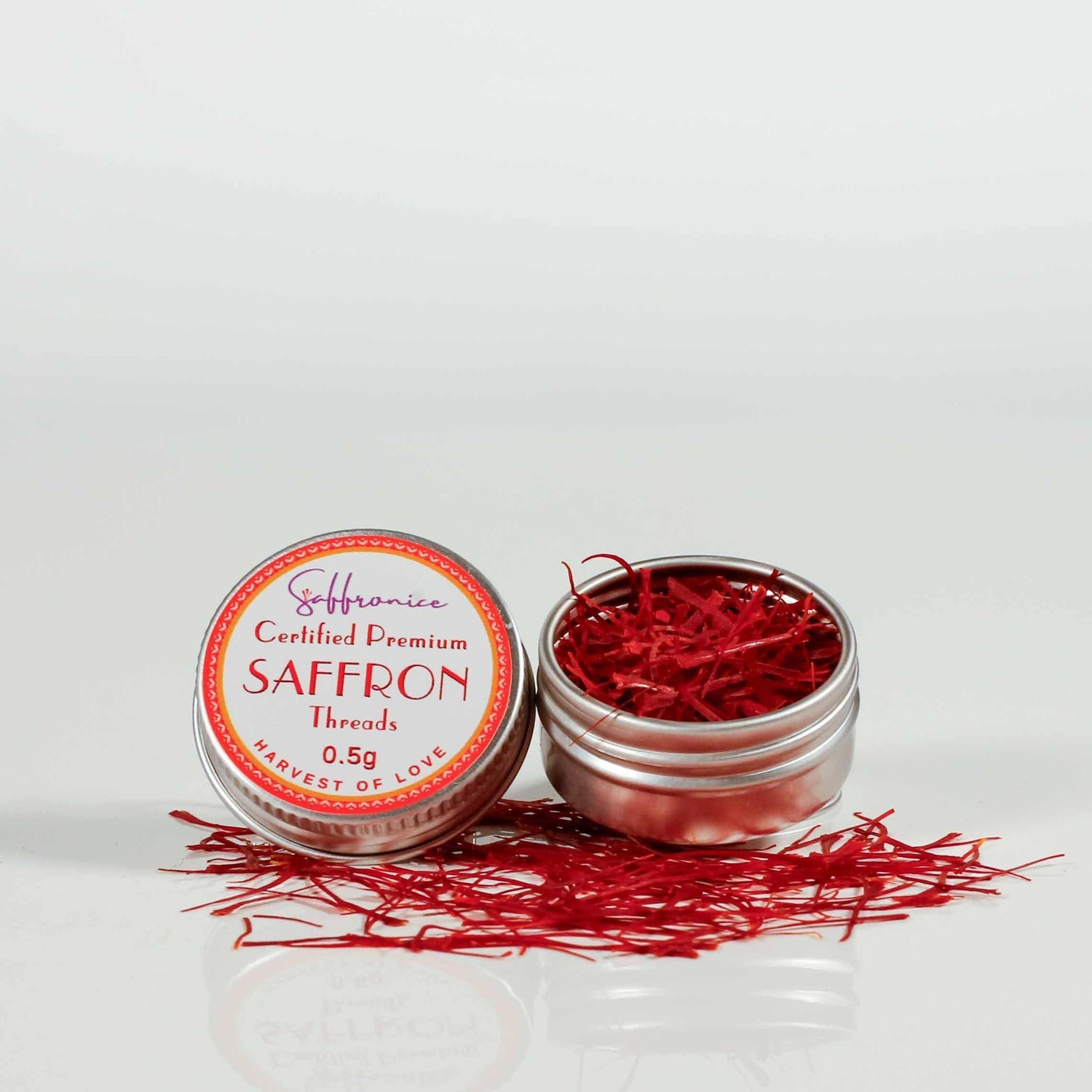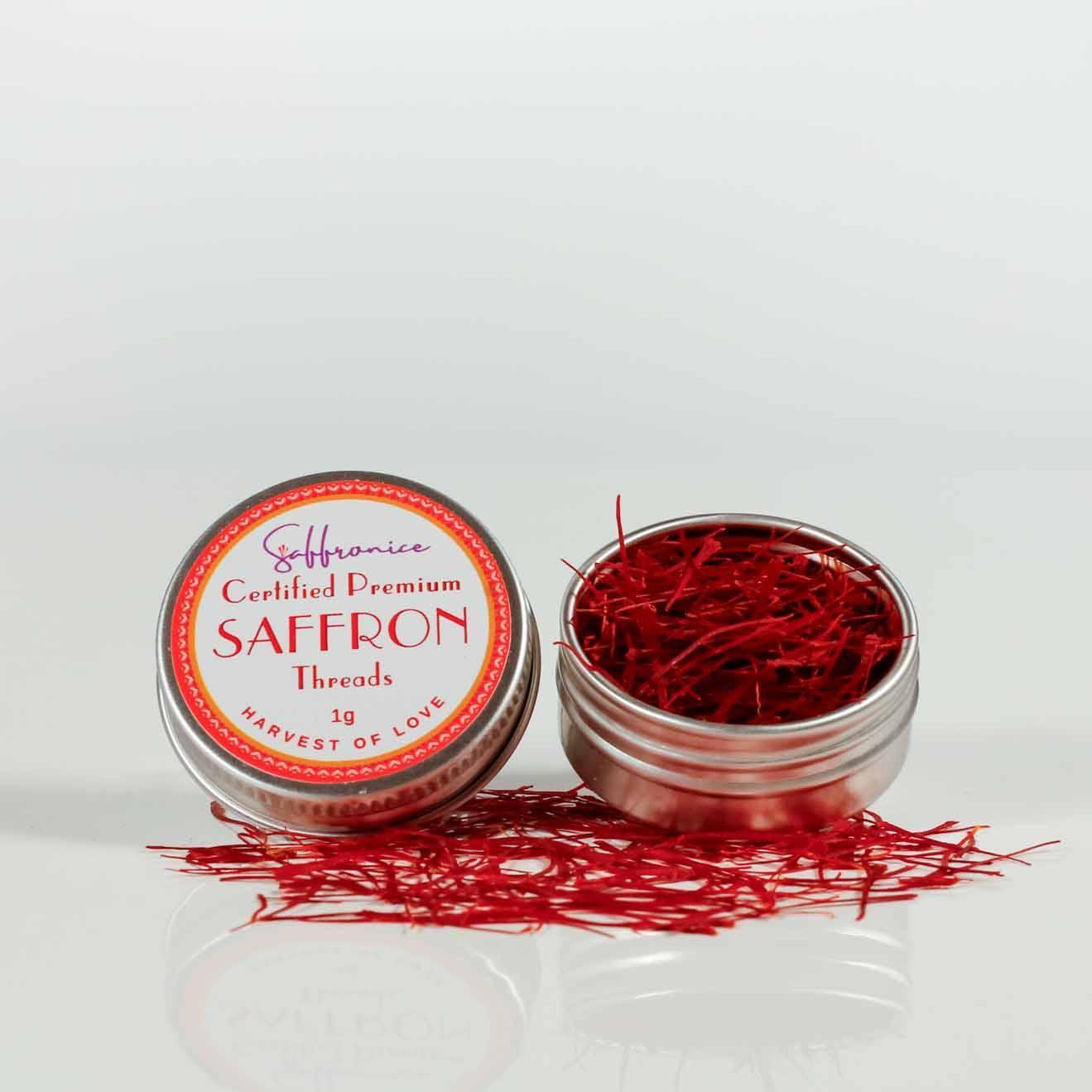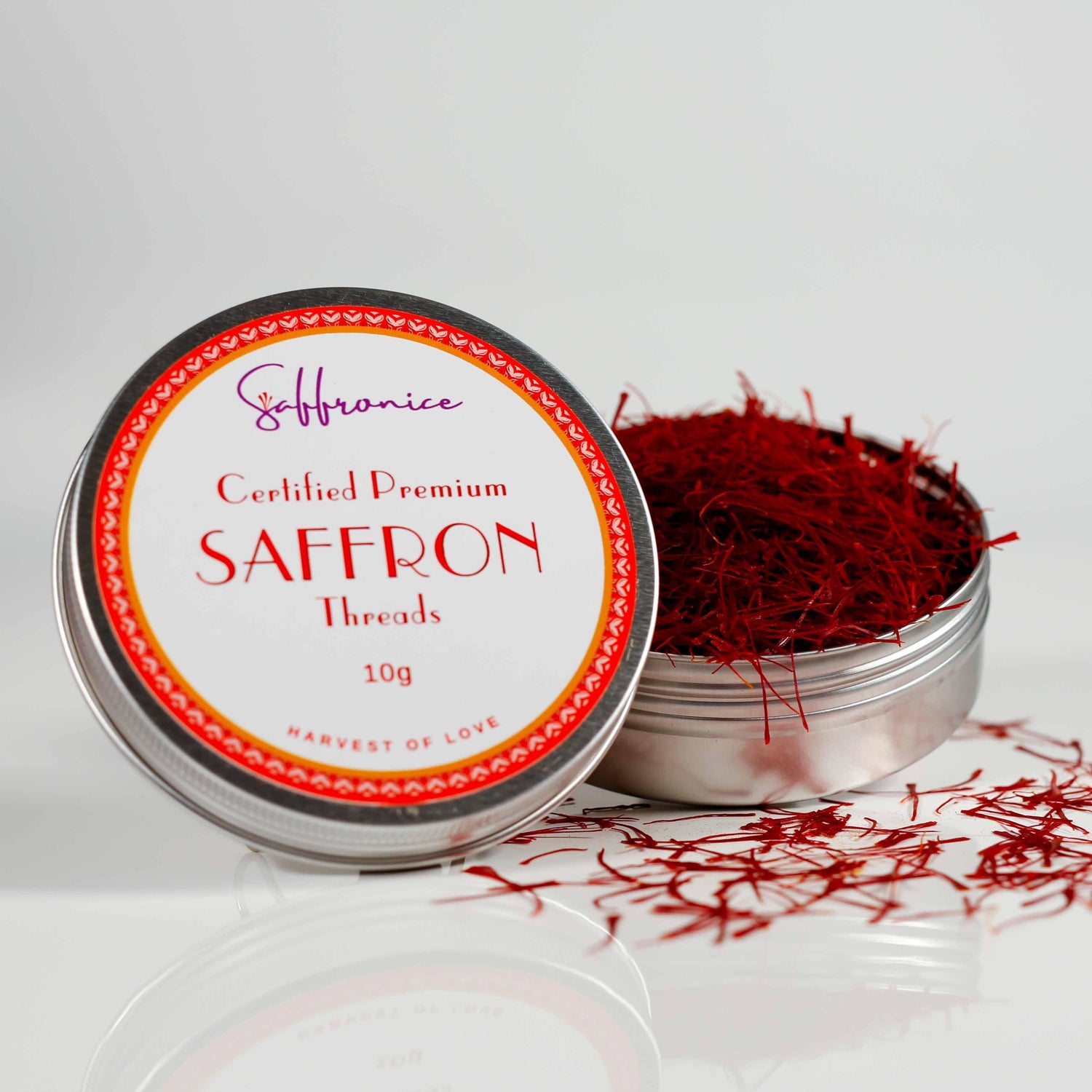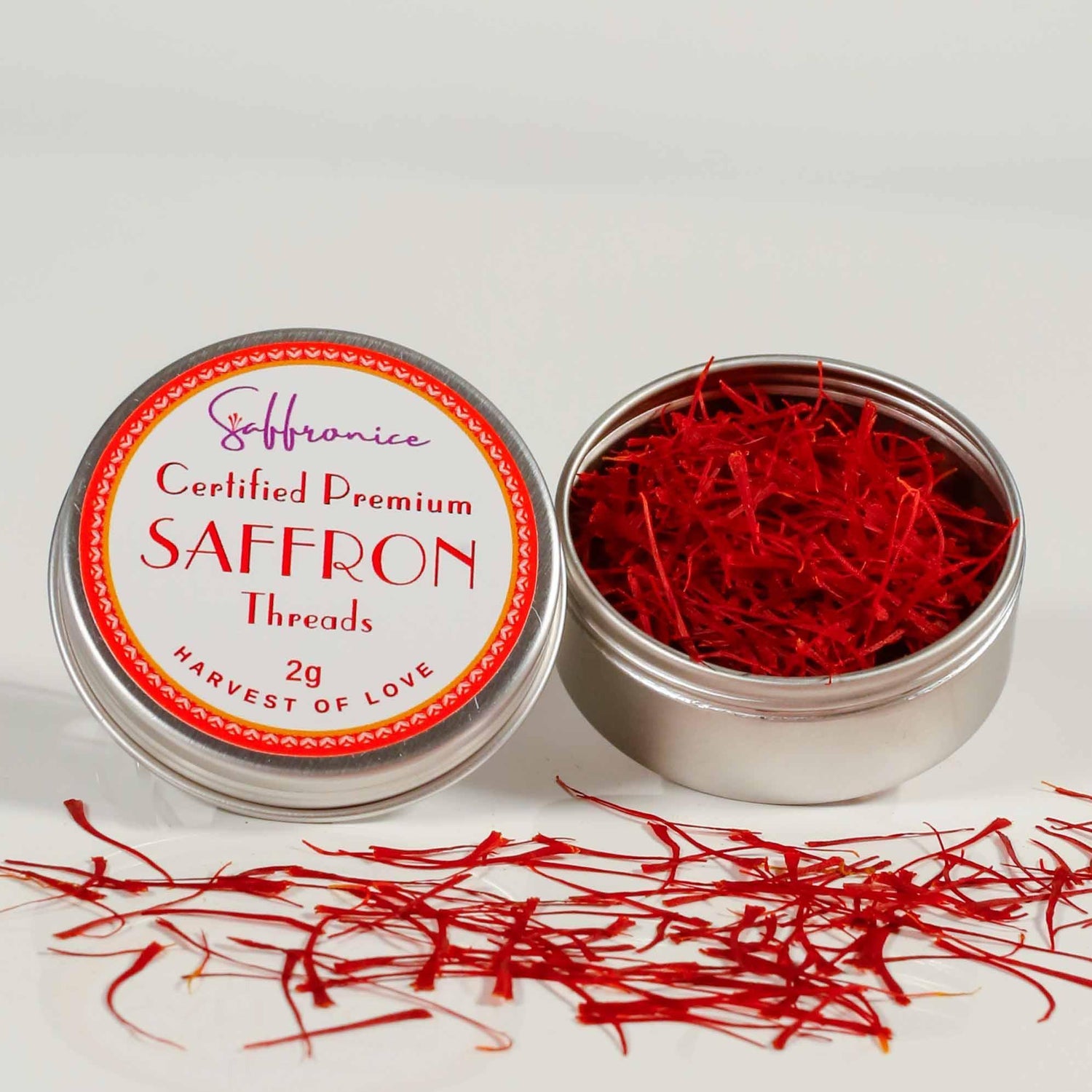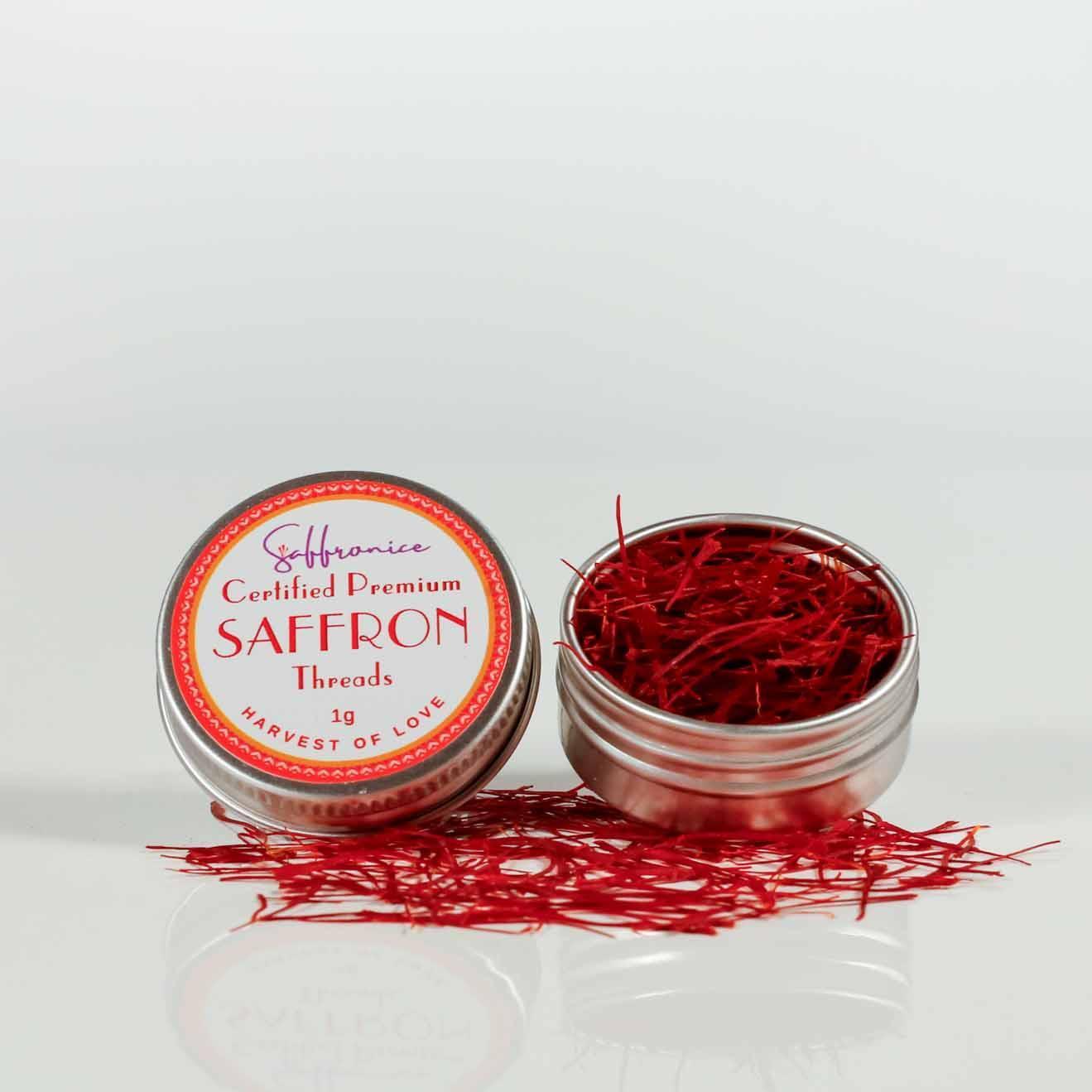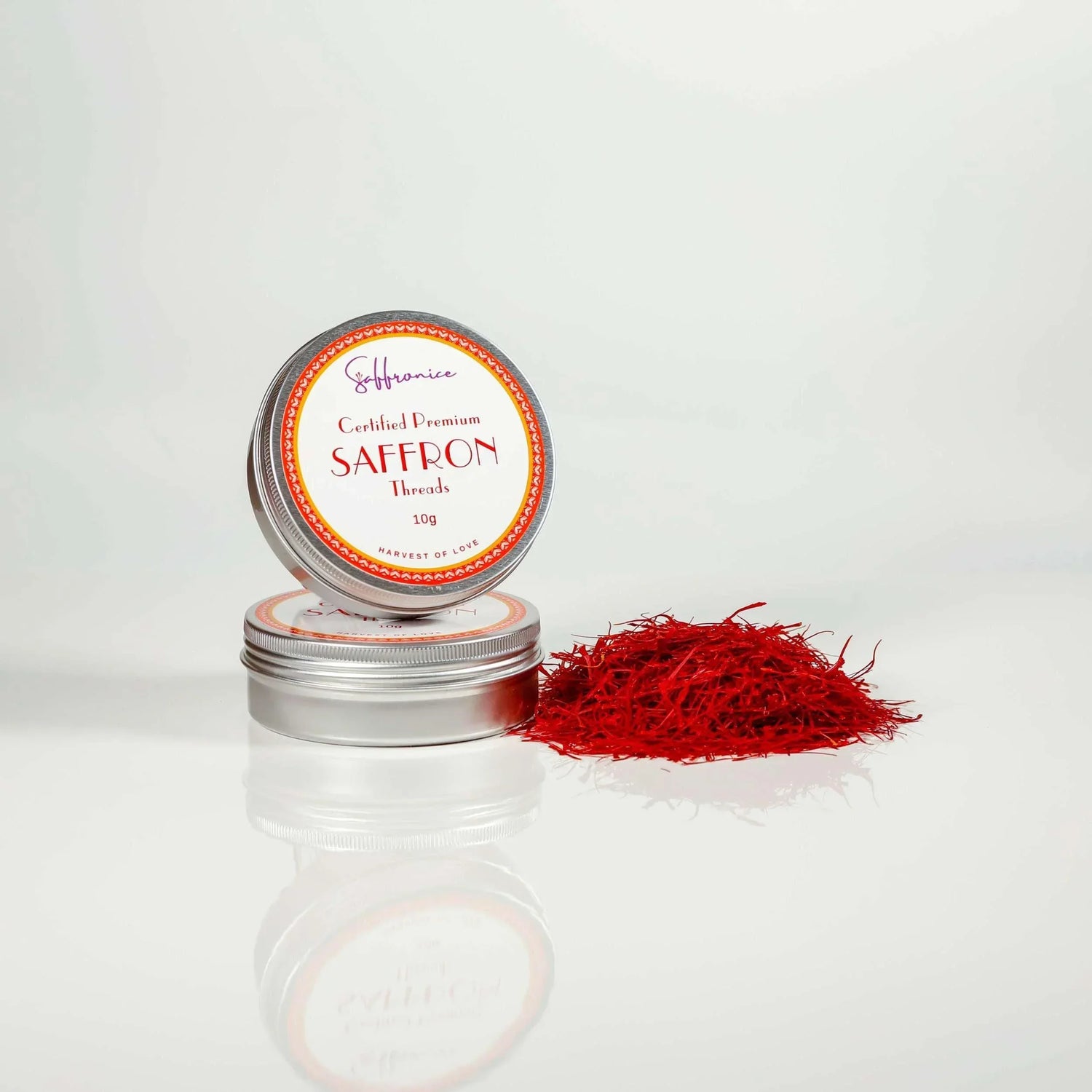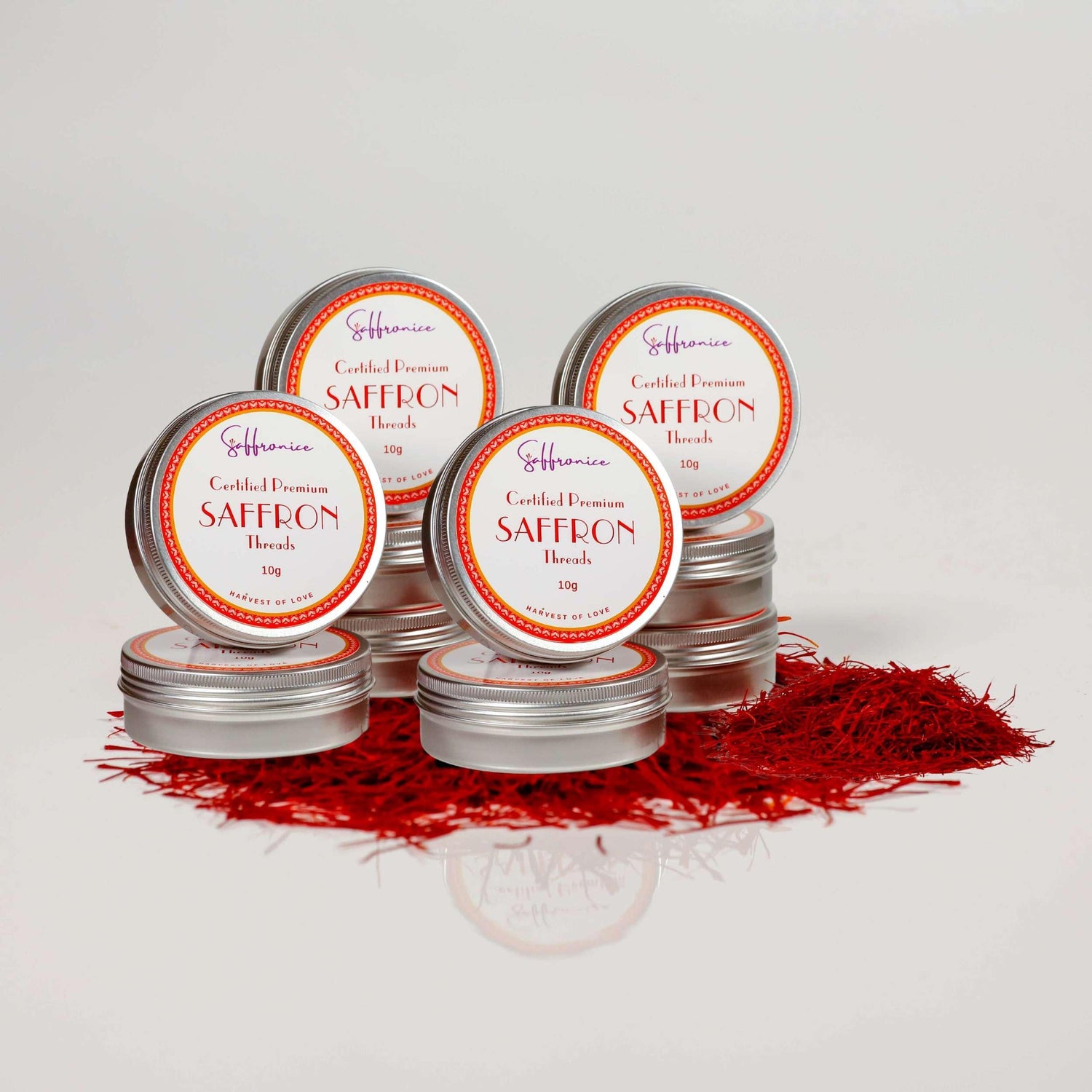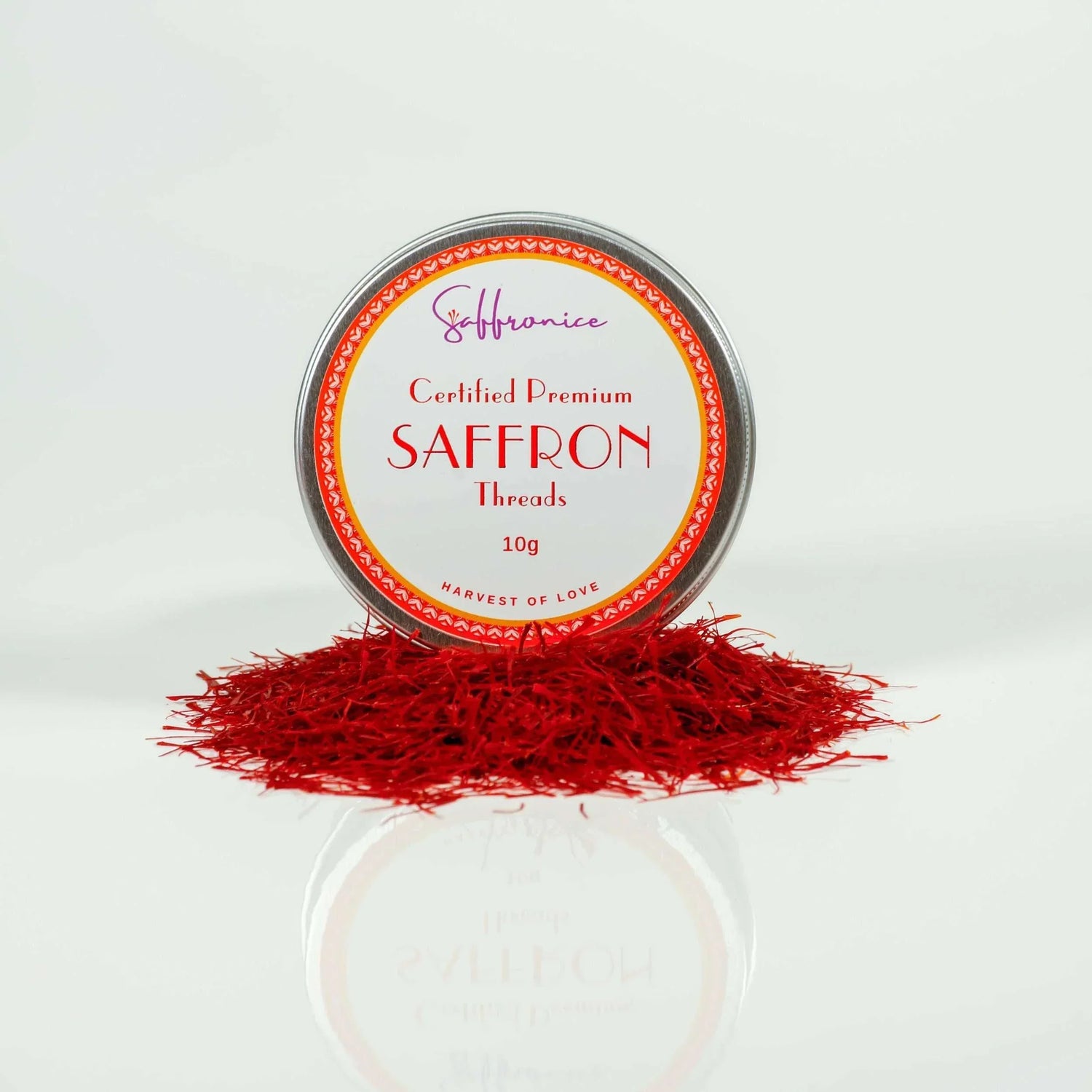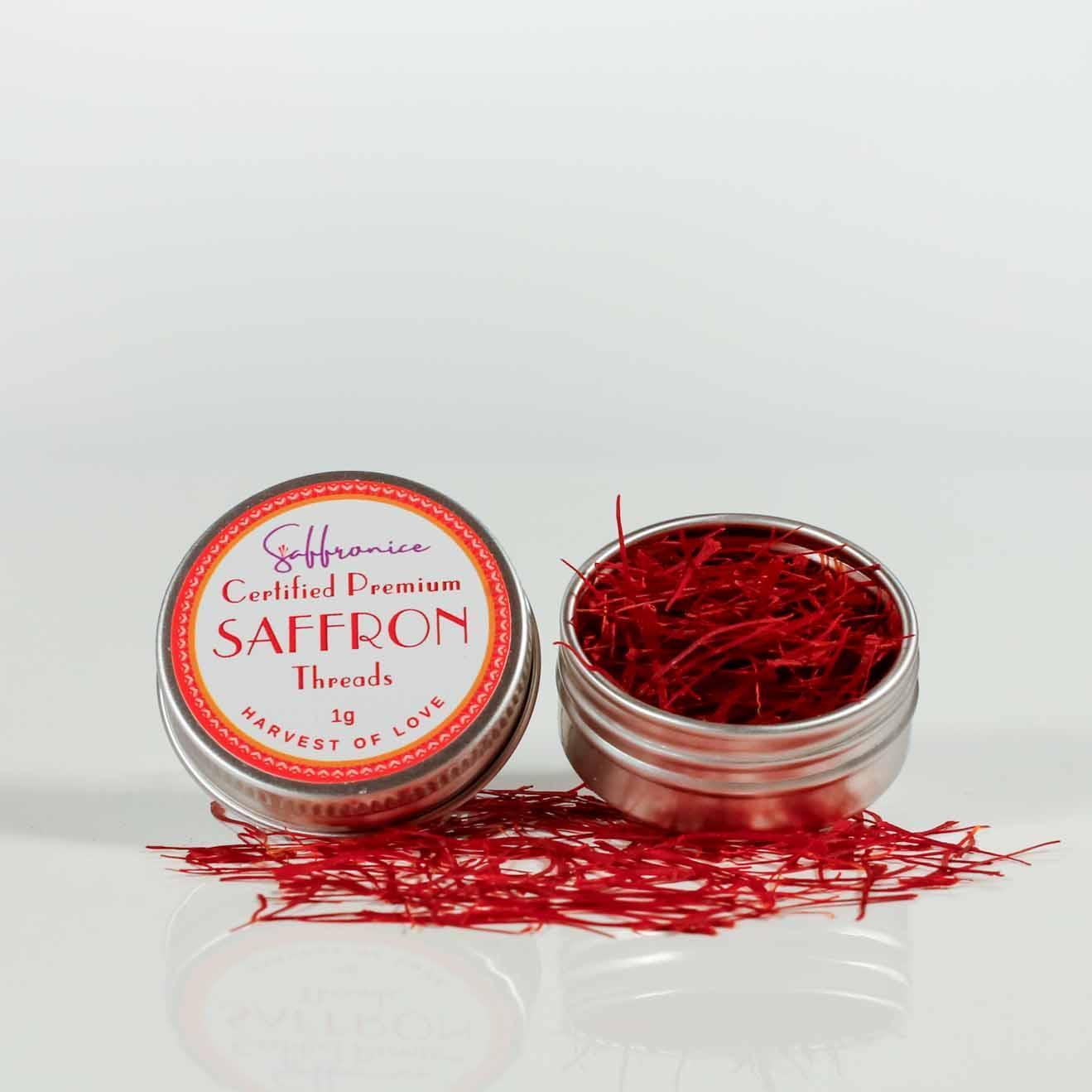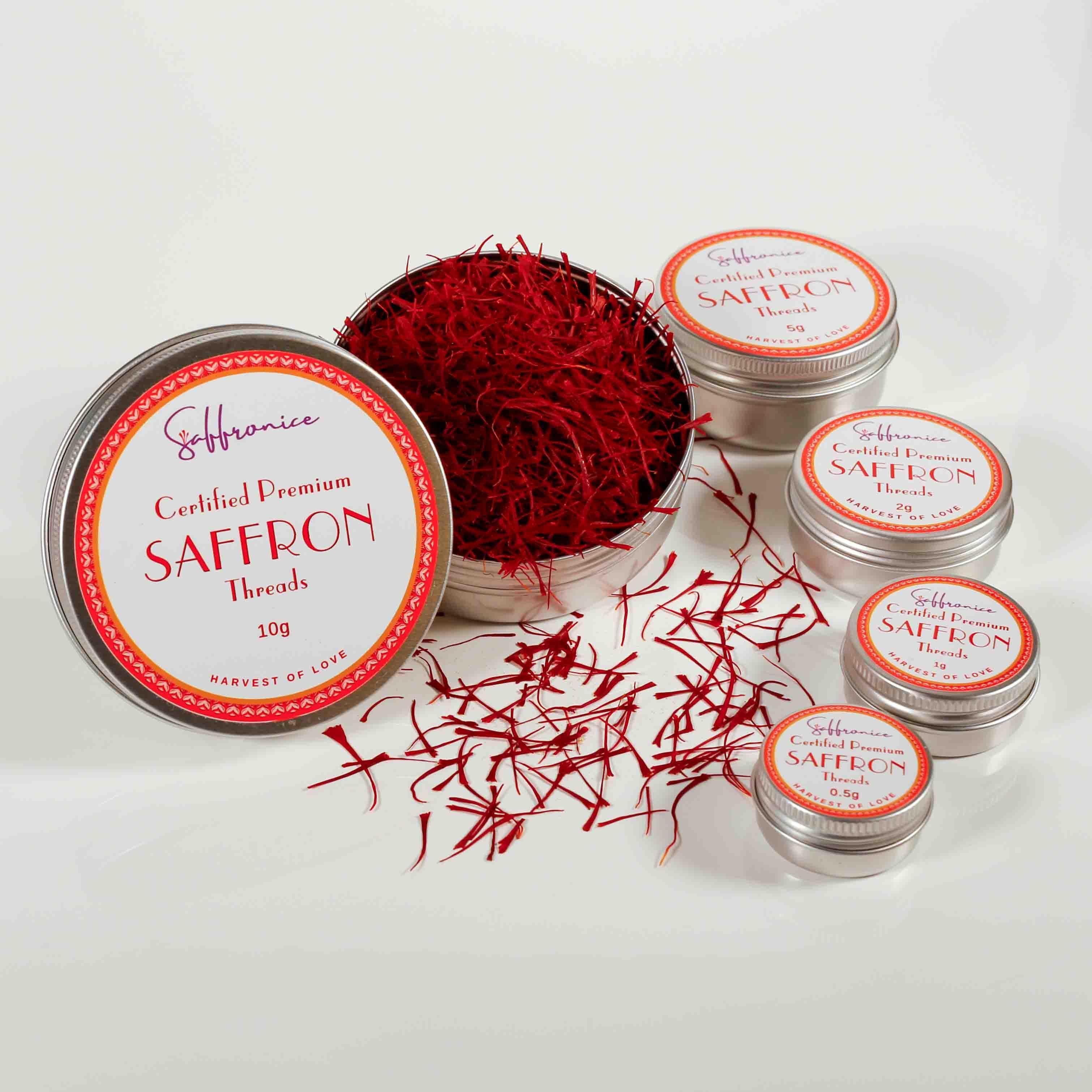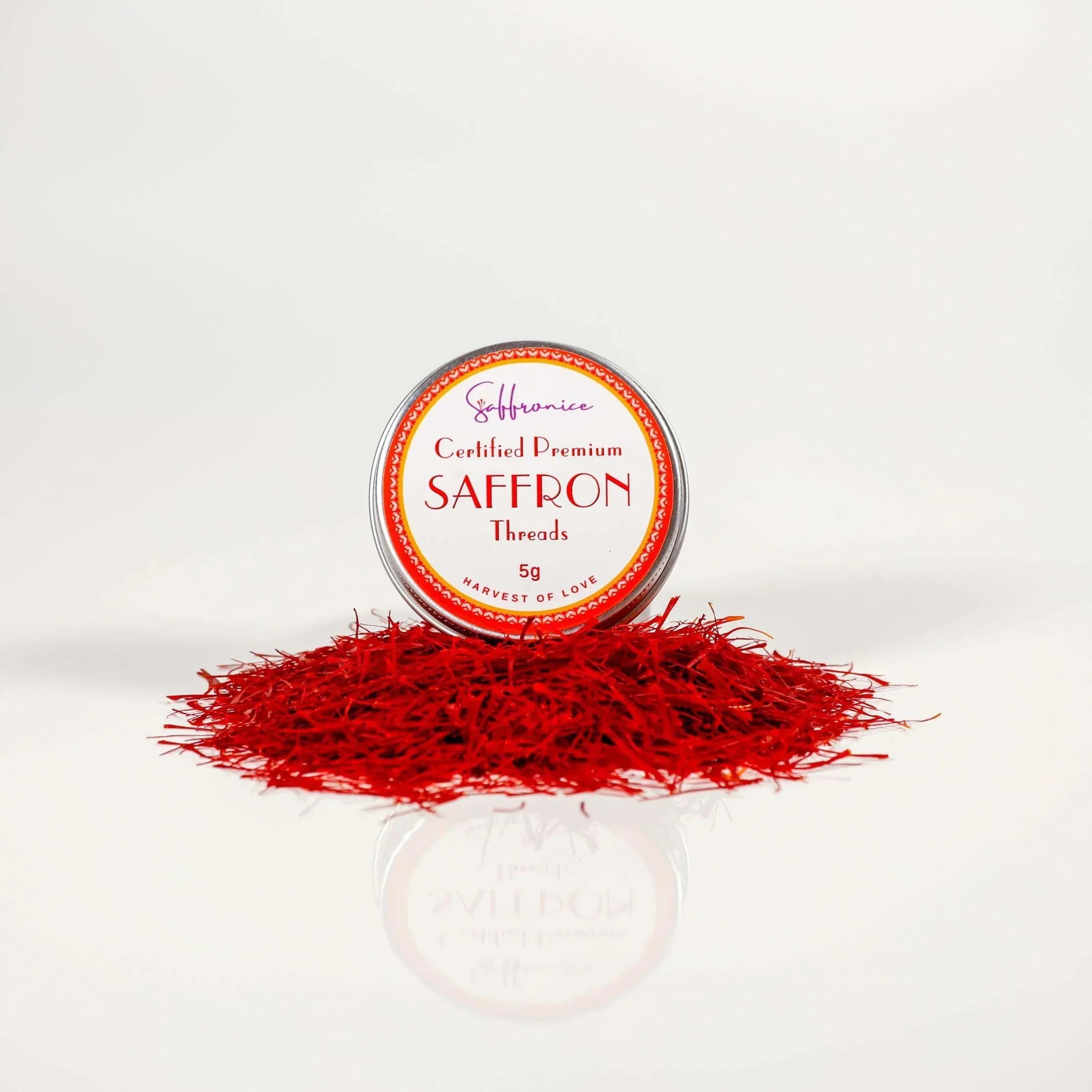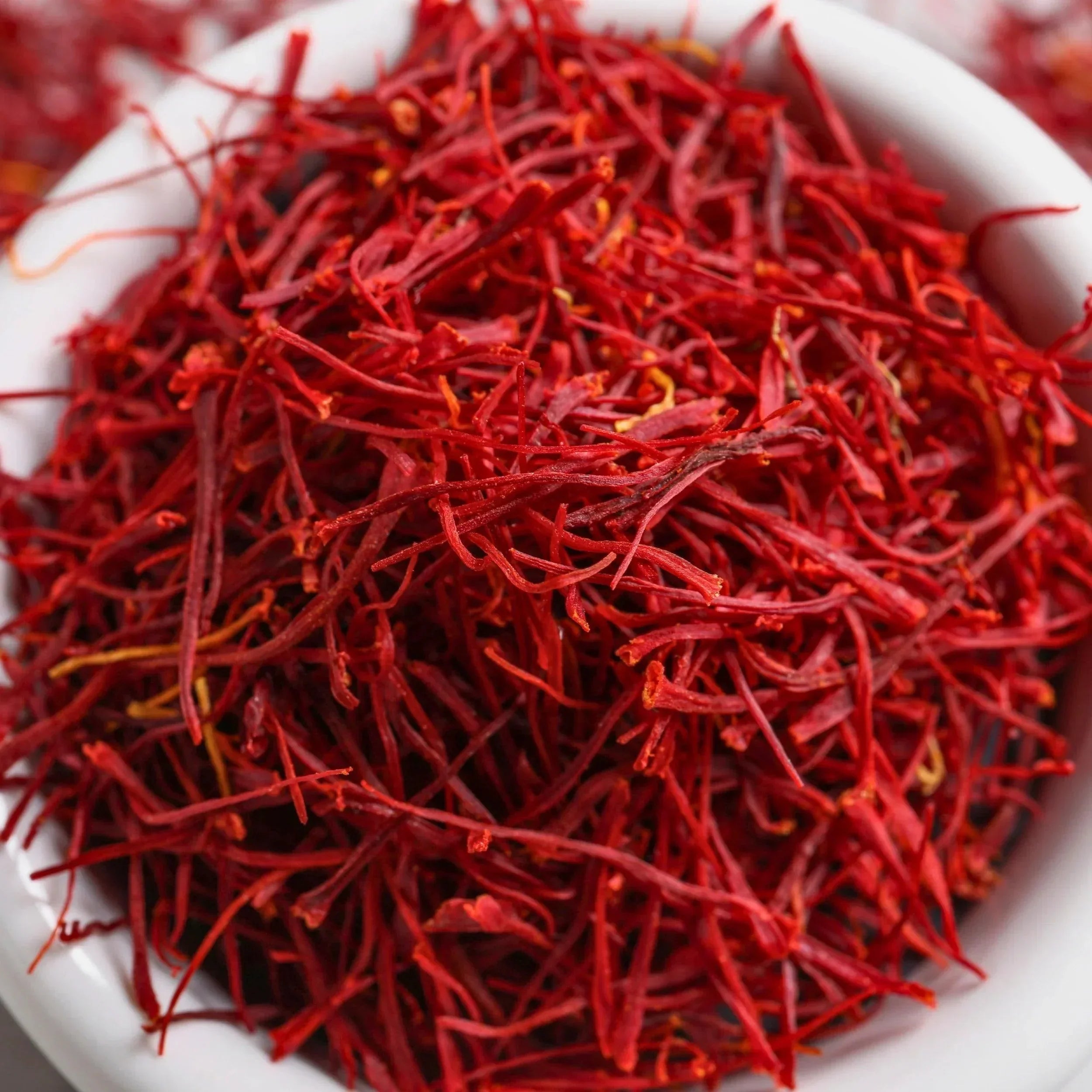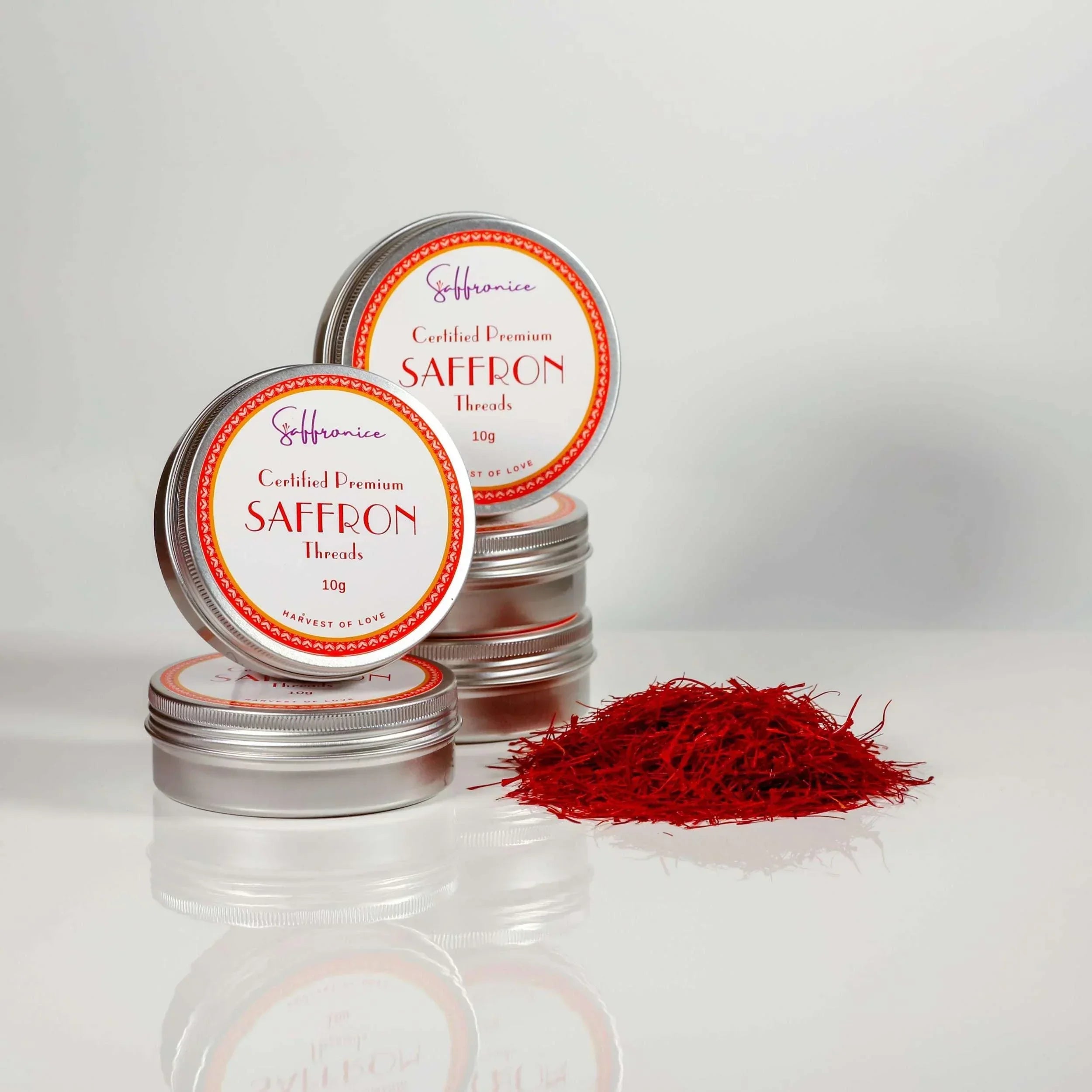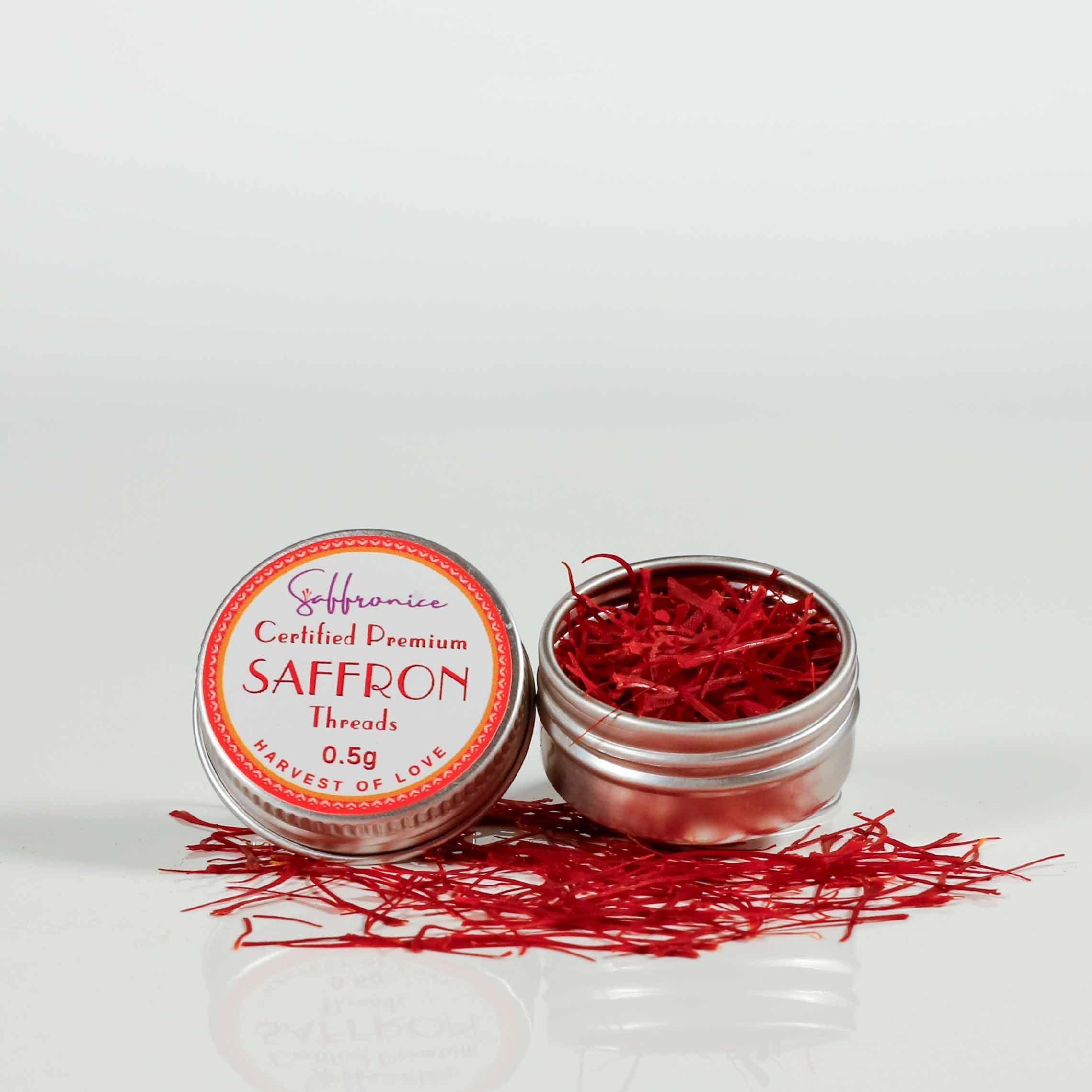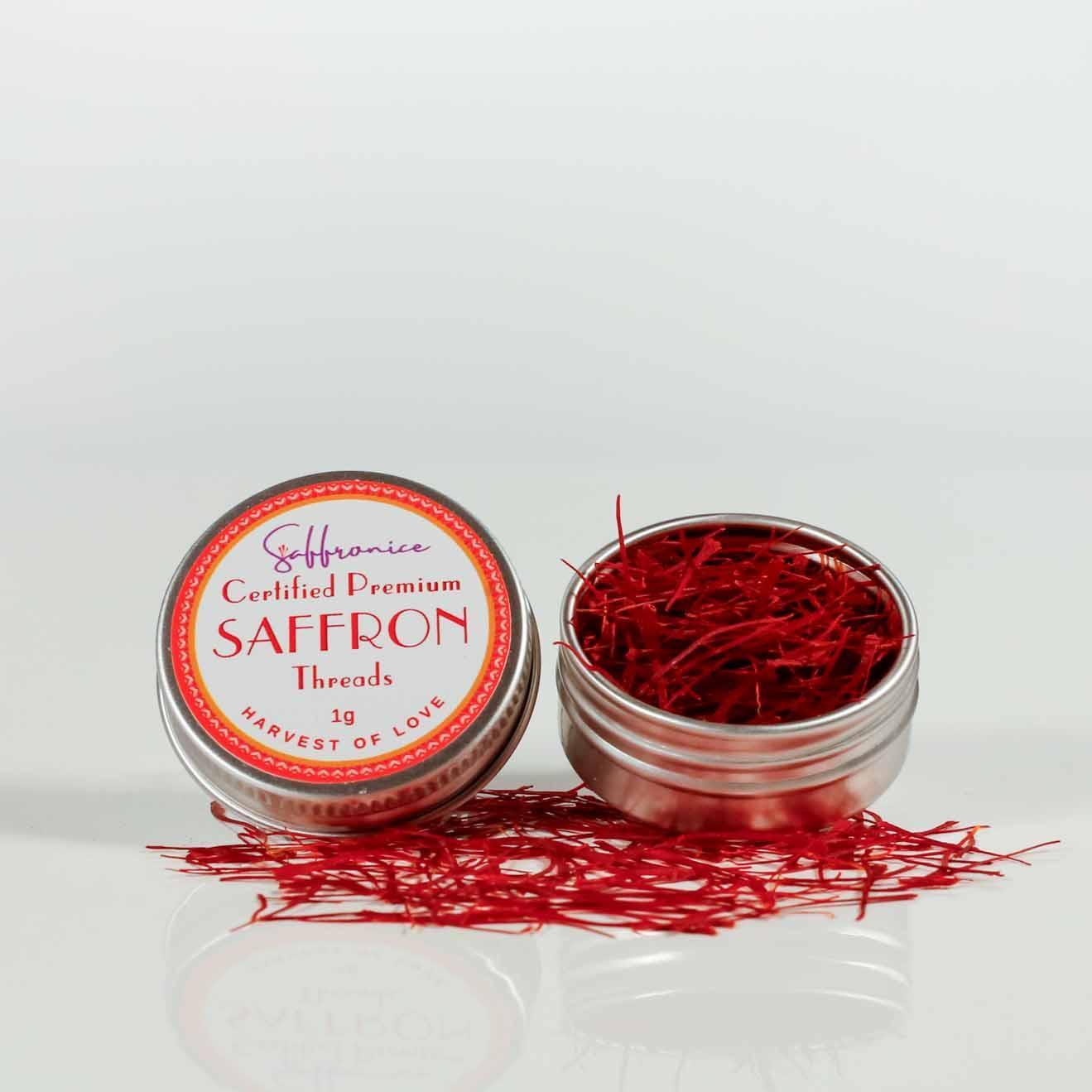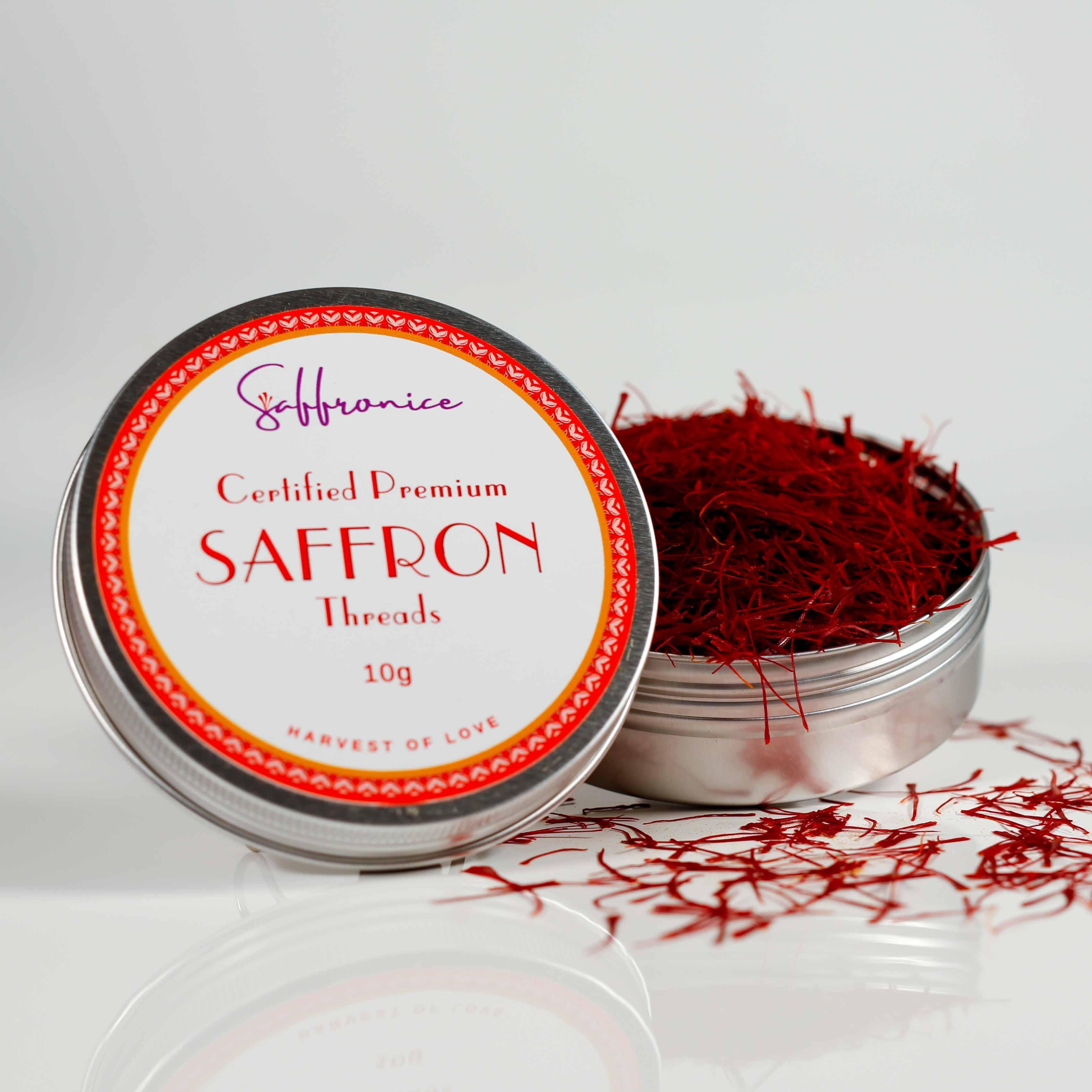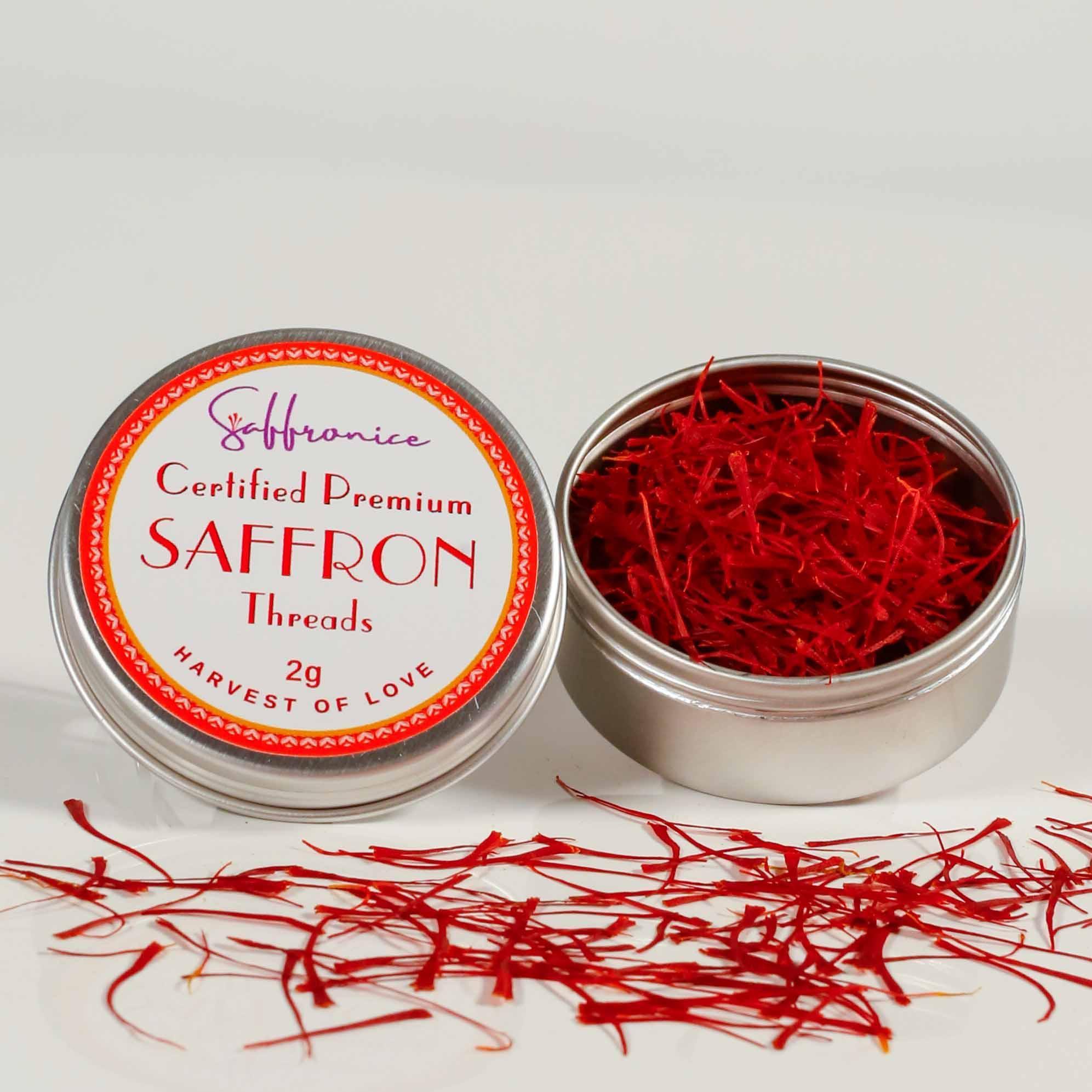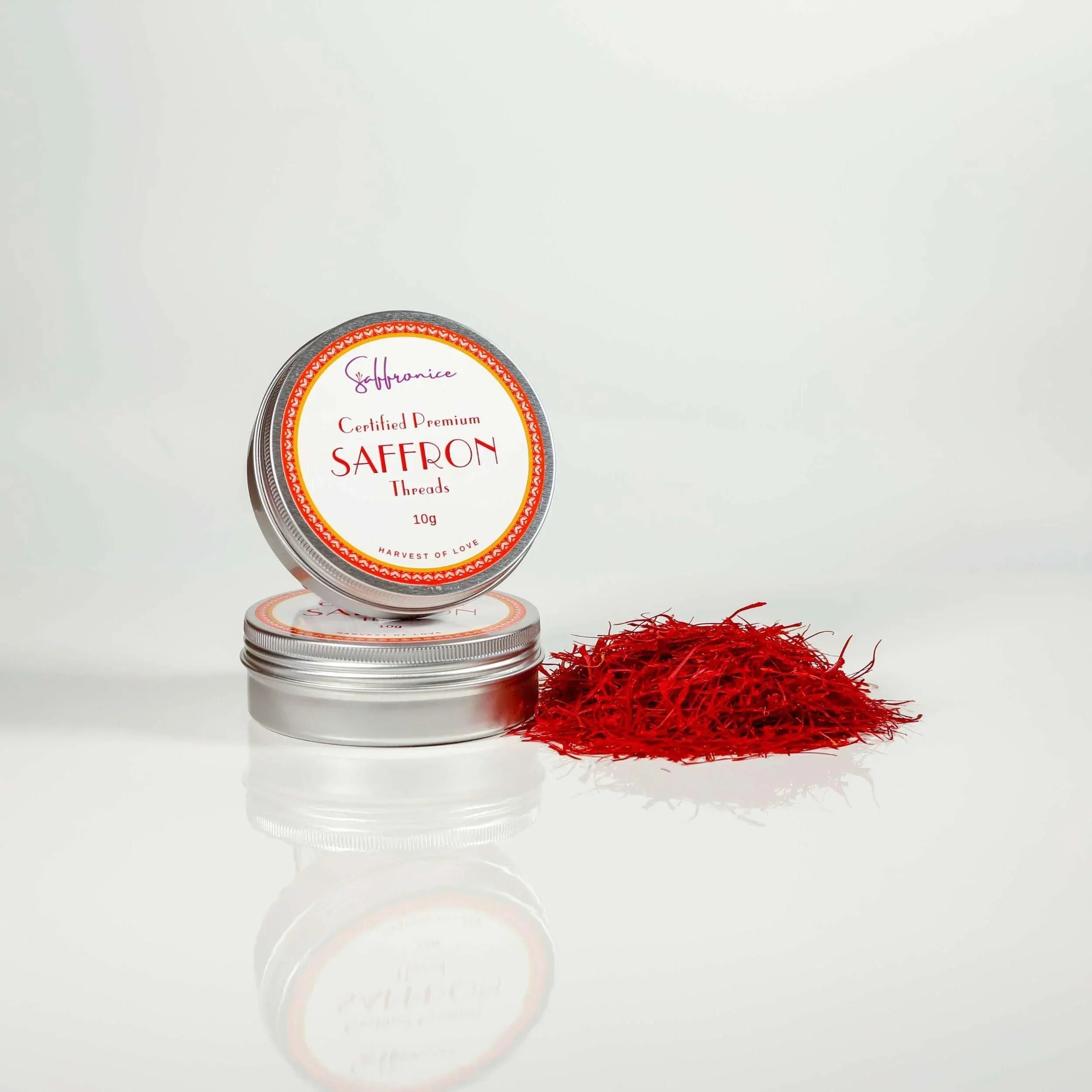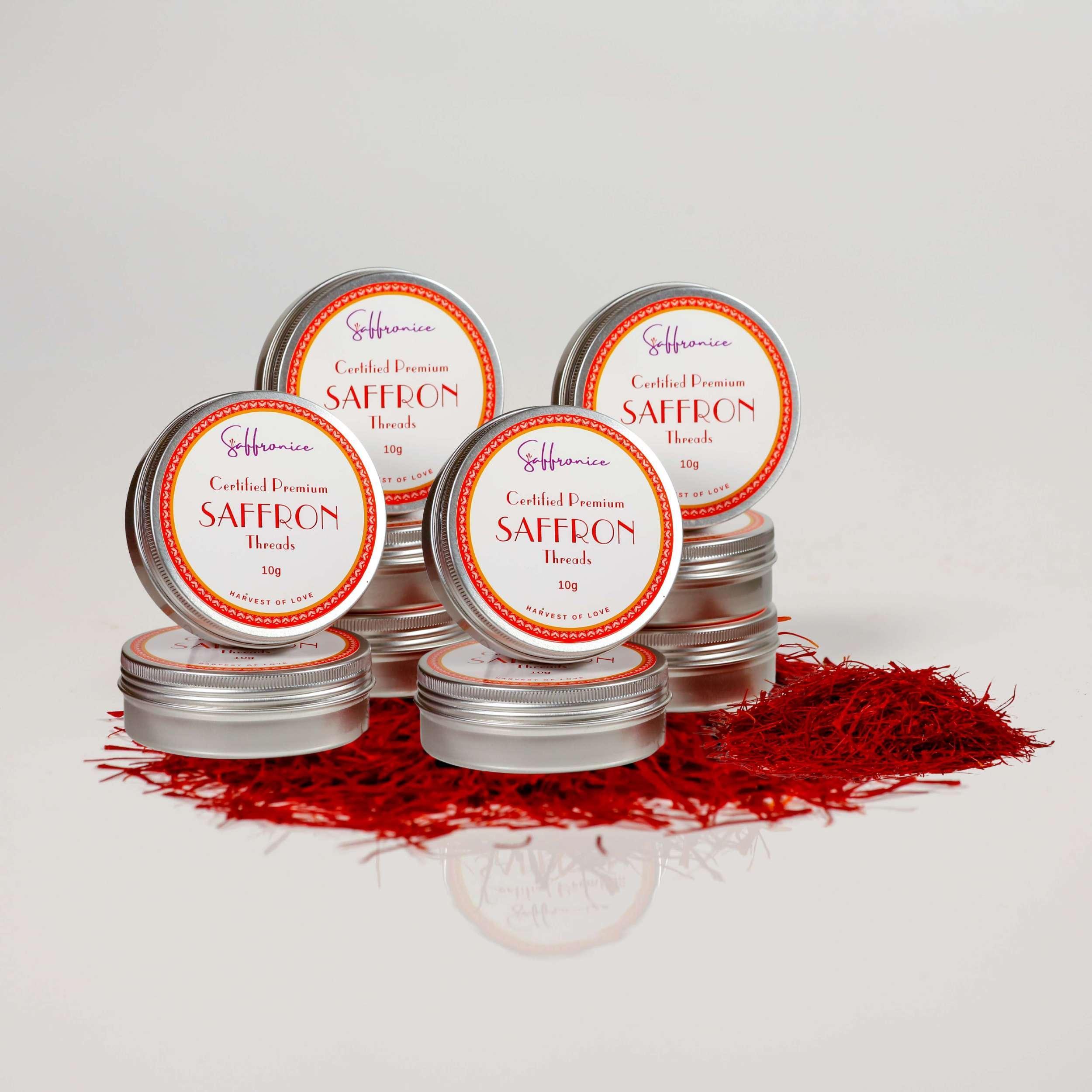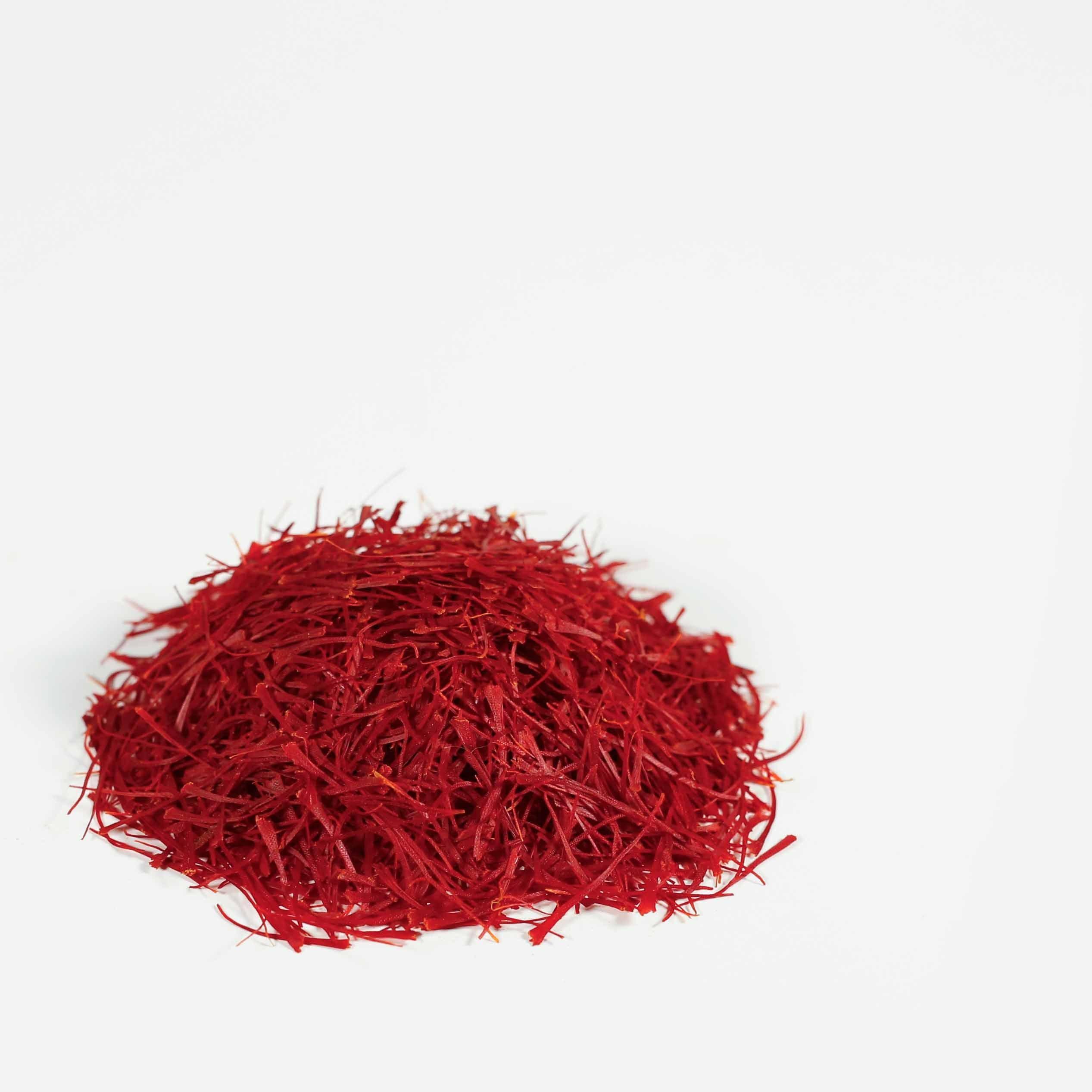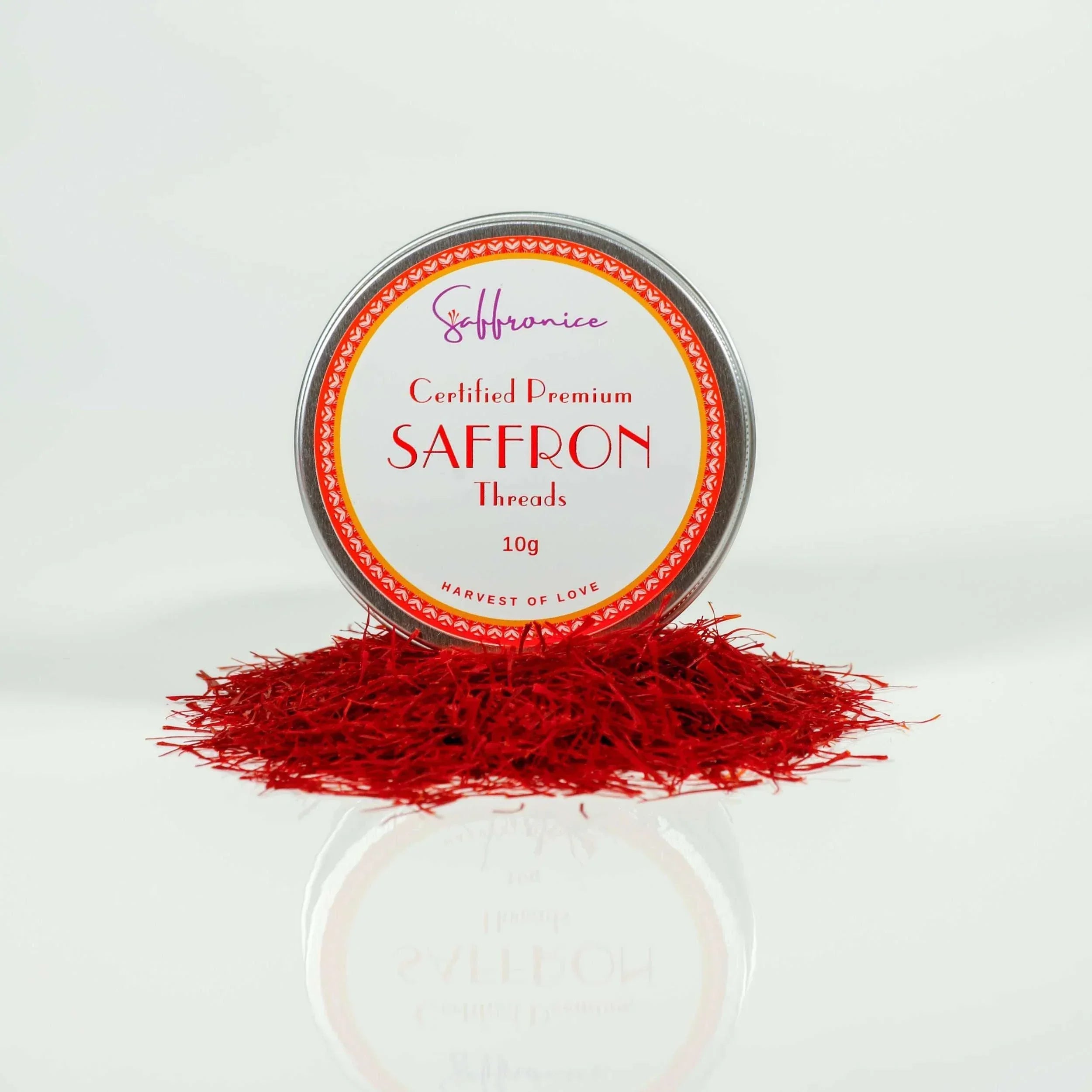The Versatile World of Saffron
Welcome to the enchanting world of saffron, a spice revered for its unique flavour, vivid colour, and remarkable versatility. Whether you're a culinary enthusiast or a seeker of natural health remedies, understanding the proper use of saffron can transform your experience with this exotic spice.
Saffron, often called the 'king of spices', is celebrated for its distinct aroma and ability to enhance a wide array of dishes, from saffron-infused teas and aromatic coffees to rich mains and decadent desserts. Its role in Mediterranean, Indian, Chinese, and Persian cuisines is legendary, lending an unparalleled zest to every recipe it graces.
However, the true potential of saffron extends beyond the kitchen. Esteemed for its herbal healing properties, saffron offers benefits like aiding weight loss, alleviating PMS symptoms, and promoting mental wellness. This delicate yet powerful spice is not just a culinary ingredient but a bridge to a healthier, more vibrant lifestyle.

To fully harness the benefits of saffron, it's crucial to use it correctly. The following sections will guide you through the nuances of using saffron in cooking and wellness, ensuring you make the most of every strand of this precious spice. Let's explore its culinary and medicinal marvels on this saffron journey. 🌺🍽️💛
Saffron: The Spice That Complements Everything
Hey there, fellow food enthusiasts! Today, let's delve into the beautiful world of saffron and explore how this versatile spice can transform your meals and drinks into delightful experiences.
Pairing Saffron with Foods and Beverages
Saffron's adaptability is second to none. Whether adding a warm, aromatic touch to your recipes or jazzing up your beverages, saffron is your go-to spice.
-
In the Kitchen: Saffron shines in stews, soups, and meat marinades. And let's not forget about rice dishes – they're game-changers! The way saffron elevates a simple risotto or a vegetarian paella is just magical.
-
Drink Up with Saffron: Tea, coffee, smoothies, or even frozen drinks – saffron adds an exquisite twist. Imagine a saffron-infused iced tea on a warm day – refreshing and luxurious!
-
Baking with Saffron: From bread to desserts, cookies, and even croissants, saffron adds a unique twist that'll have everyone asking for your hidden ingredient.
The Right Amount of Saffron to Use

When it comes to saffron, a little goes a long way. The rule of thumb is 50-100mg per recipe for two adults. But hey, feel free to adjust to your taste! Love that strong saffron aroma in your rice? Go for 200mg. It's all about what tickles your taste buds.
Saffron Threads vs. Powder
-
Saffron Powder: It's potent, releasing its colour and aroma quickly. Use less – like about 50mg for a dish for two. Always get your saffron powder from a trusted source, or grind your own for the freshest flavour. Also, be vigilant with your powder, as it oxidases much quicker than threads. Keep refrigerated in a sealed container.
-
Saffron Threads: These beauties release their magic leisurely, perfect for dishes where you want a gradual infusion of flavour. Best used for Saffron Threads are in dishes that have liquid, like stews and soups; otherwise, steep it before adding it to dry foods like rice and marinades.
Timing is Key: When to Add Saffron

-
In Liquids: For stews and soups, add saffron (threads or powder) about 10-15 minutes before finishing up. This timing preserves its flavour and colour to the max.
-
For Drier Dishes: Preparing saffron-infused water works wonders. Add this golden liquid to your rice dishes and marinades anytime during cooking.
-
Baked Goodies: Mixing saffron powder with dry ingredients like flour and sugar ensures an even distribution of that saffron goodness.
-
In Drinks: Add saffron when it's cool enough to sip for hot beverages like tea or coffee. For cold drinks, use the 'blooming technique' (which I'll explain later) and add the saffron liquid anytime for an extra kick of flavour.
So there you have it – your guide to making the most of saffron in your culinary adventures. Let's spice up our cooking and drinking with this incredible ingredient! 🌸🍽️🍹
Saffron for Health: More Than a Culinary Spice
Let's explore the lesser-known side of saffron – its health benefits. This vibrant spice isn't just for adding flavour and colour to your dishes; it's also a wellness powerhouse.
Saffron: A Treasure Trove of Health Benefits
Saffron has long been cherished not just for cooking but also for its healing effects. This unique spice is known to help with everything from lifting your mood to aiding digestion. It's a natural antidote for those looking to enhance their overall well-being with a touch of flavour.
The Power-Packed Components of Saffron
Saffron is rich in certain bio-active compounds, each playing a unique role in promoting health:
-
Crocins: These are the compounds that give saffron its vibrant colour. Crocins have been studied for their potential to improve mood and cognitive function. They are potent antioxidants, helping to protect your body's cells from damage and potentially reducing stress and anxiety.
-
Safranal: This is the compound behind Saffron's distinct aroma. Safranal has shown promise in studies for its ability to help with sleep disturbances and mood swings and even in providing relief from PMS symptoms.
-
Picrocrocin: Responsible for the bitter taste, picrocrocin is believed to aid digestion and boost appetite. It's also being researched for its potential effects on eye health, particularly in age-related vision problems.
Health Benefits: More Than Just a Spice

-
Mental Well-Being: Thanks to crocins and safranal, saffron is seen as a natural mood enhancer. It's often used in herbal medicine to help with depression and anxiety, offering a calming effect.
-
Digestive Health: Picrocrocin in saffron can stimulate the appetite and aid digestion, making it a great addition to meals if you're looking for digestive support.
-
Skin and Eye Health: The antioxidant properties of Crocins can contribute to skin health, promoting a radiant complexion. Additionally, ongoing research suggests potential benefits for eye health due to its antioxidant content.
Using Saffron the Right Way for Health Benefits
To tap into these health benefits, using saffron properly is crucial. Remember, high heat can destroy these delicate compounds. So, when using saffron for its medicinal properties, it's best to add it to dishes or drinks that are warm, not boiling. This way, you preserve its bio-active components and get the most health benefits from this extraordinary spice.
So, next time you sprinkle some saffron into your dish or brew a cup of saffron tea, remember you're not just adding flavour. You're also giving your body a dose of some amazing compounds that can contribute to your overall well-being. Cheers to health with a pinch of saffron! 🌿🍵🌟
Exclusive Cold-Brewing Saffron Method by Saffronice

Hey, saffron enthusiasts! Ever heard of the cold-brewing method for saffron? It's a fantastic way to extract all the goodness from this precious spice without losing any of its valuable compounds. Let me walk you through the exclusive Saffronice cold-brewing method. It's super easy and totally worth it!
Step-by-Step Cold Brewing Instructions
-
Measure It Out: Start with about 50-100mg of saffron. This is usually enough for a few servings.
-
Choose the Right Container: Go for a small glass or ceramic container. These materials are inert and won't interact with Saffron's delicate compounds.
-
Add Finely Crushed Ice: Cover the saffron with a centimetre of finely crushed ice. Use purified, non-chlorinated water for the ice, if you can. This helps maintain the purity of the flavour.
-
Let It Brew: Leave the container at room temperature, away from direct sunlight. The ice will slowly melt, gently extracting the Saffron's colour, flavour, and bio-active components.
-
The Magic Moment: Once the ice has completely melted, voila! You've got yourself a beautiful, aromatic saffron brew.
Storing Your Saffron Brew: Best Practices
-
Keep It Cool: Store your saffron brew in the fridge. This helps preserve its freshness and potency.
-
Seal It Tight: Use a container with a tight lid to avoid any absorption of other flavours and aromas from your fridge.
-
Use Within 10 Days: Use your cold-brewed saffron within 10 days for the best quality.
This cold-brewing method is a game-changer, especially if you use saffron for health benefits. It ensures you get all the goodness without any damage from heat. Plus, it's a great way to prep saffron for adding to dishes or drinks later. Give it a try and see how it transforms your saffron experience! 🌸🌿🥤

Saffron FAQ's
How do you pick good saffron?
-
To pick good saffron, opt for sellers offering a 30-day money-back guarantee, signalling confidence in their product's quality. Ensure it's packaged in non-transparent containers to protect it from light damage. Look for a deep red colour, a strong aroma, and dry, unbroken threads. Avoid overly bright, moist saffron or those with excessive yellow parts, as these could indicate lower quality or tampering.
What is the best way to take saffron for health?
-
The crushed ice method detailed in this article is highly effective for health benefits. By infusing saffron in cold water, its bioactive compounds are better preserved. Additionally, incorporating saffron into your diet via various dishes and beverages allows you to enjoy its health advantages while enhancing the flavour of your meals and drinks.
-
Another convenient way is using saffron supplements, Saffron extract and cold-brewed saffron.
How can you tell if saffron is high quality?
-
High-quality saffron has a deep red colour, a strong and fresh aroma, and long, unbroken threads. It should not be dusty and should feel slightly sticky to the touch.
What are the 4 grades of saffron?
The four common grades of saffron are:
- Grade 1 (Super Negin): Vibrant colour, long threads, intense flavour.
- Grade 2 (Sargol): Deep red colour, slightly shorter threads.
- Grade 3 (Pushal): Whole strands with yellow/orange styles.
-
Grade 4 (Dasteh/Bunch): Whole threads, including the yellow styles.
How can you tell real saffron from fake?
-
Real saffron slowly releases a yellow colour when soaked in water and has a distinct aroma. Fake saffron releases colour quickly and uniformly, with little to no scent.
What does saffron taste like?
-
When used in food and drinks, saffron imparts a sweet, earthy flavour with floral and honey-like undertones, adding a complex layer to the dish or beverage.
Can you eat raw saffron?
-
While you can eat raw saffron, it's not recommended. It can taste bitter and stain your teeth and tongue yellow in its dry form. Using it in food or drinks where its flavour can be fully appreciated is better.
View Other Interesting Saffron Related Articles


